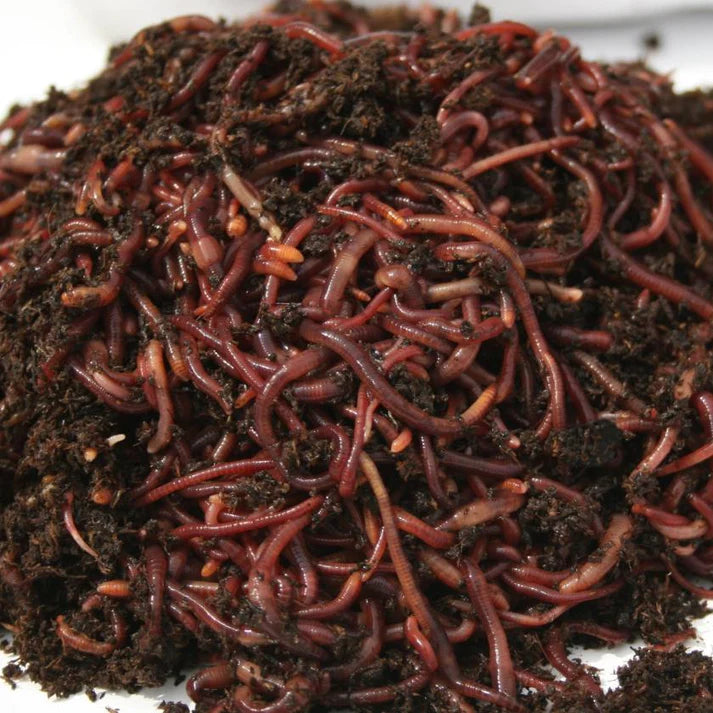Fascination About Red Wiggler Express
This overview will present you to the red wiggler to include a much deeper on dive on the varieties and details on reproduction, life cycle, and recreation. We'll speak about exactly how to keep red wigglers and why they need to be the go-to worm for a lot of composters. The red wiggler (binomial name: eisenia fetida) is the globe's most typical composting worm.
A research recommends that the two can generate hybrid children, a phenomenon which ought to otherwise be considered difficult between the majority of worm species. Enjoyable reality: The "fetid" part of the binomial name describes what some say is a fetid secretion the red wiggler utilizes to repel predators. However I have actually been dealing with them for several years and never noticed this! The composition of a red wiggler looks like that of various other typical earthworms; a long-segmented body starts at the sharp head and terminates at a slightly-flatted tail.
Red Wiggler Express - Questions
The digestive tract is easy, starting at the mouth where the worm starts to consume its food before passing it on the vocal cords. The pharynx is a muscle section which imitates a pump to draw food right into the mouth prior to pumping it out right into the esophagus. The esophagus is narrow and thin-walled and acts as the "waiting space" for the gizzard.
Note: This need for grinding is why grit is suggested in a worm bin. The worm features no indigenous grinding capacity so the worm depends on ingested grit to assist grind its food in the gizzard. The belly is where the first chemical breakdown of food occurs with the help of a protein-busting enzyme.

(https://www.localstar.org/red-wiggler-express)The intestine forms the lengthiest component of the worm and is where the bulk of food digestion takes location via enymatic processes. The castings at some point pass through the anus at the end of the worm as pills covered with a biologically-rich mucous.
Within 42 days, these infant worms will reach sexual maturation as shown by the appearance of the clitellum. A fully grown red wiggler can be expected to live between one to three years. The magnificent red wiggler might often be utilized as a bait worm for smaller sized fish or as a healthy protein source for chickens and reptiles.
Some Known Facts About Red Wiggler Express.
And as pointed out above, they are one of the most common composting worm in the globe. But why? Well there's probably not just one factor. Rather, a mix of cost, strength, and comfort in a variety of temperatures makes it one of the most suitable composting worm for most new vermicomposters. Red wigglers and their cocoons can endure in a variety of conditions.
This is an usual practice among worm carriers that don't wish to take the chance of having the worms sit in a hot or cool warehouse over the weekend. Worm farmers are not storing worms in a circumstance where they prepare to deliver. The worms should be gathered from their environment initially, so growers will usually set a Friday or Saturday deadline in order to harvest in time for a Monday shipment.
To save on delivery expense, you might desire to see if there are any close-by "Mother and Pop" stores with a Google search (Where To Buy Worms).
I call these the "Huge 3" aspects of worm container maintenance. If you keep all 3 within suitable varieties, then there's not * that * much that can go wrong with your bin. As mentioned previously, red wigglers have a vast temperature level resistance. For ideal outcomes, keep a temperature of 55F-90F. Short departures out of that temperature level array are great.
The Buzz on Red Wiggler Express

For best results, you desire to fire for regarding 60-70% wetness level. At the ideal dampness degrees which is simply under 70% that handful must barely produce one drop of liquid.


The European Nightcrawler, the larger relative of the red wiggler, is simply as voracious and additionally creates a good lure worm. Yet it chooses a bit of a cooler setting than the red wiggler. The African Nightcrawler is an extremely big composting worm and makes a lovely, granular cast.
The Indian Blue is ravenous, however also likes a warmer climate and it additionally displays a propensity to leave the container. The red wiggler is a sturdy worm and isn't as picky regarding its climate. I like to call it the Ford Taurus of vermicomposting worms; you will not brag to your hardcore composting pals that you own them, yet they will offer you well.
Top Guidelines Of Red Wiggler Express
Guaranteed to life 1/2 pound of hand arranged Red Wigglers/Compost with worms (+500 worms) in different stages of life from cocoons to develop worms in their all-natural environment/bedding. Hand arranged worms lowered the disturbance of the worms therefore guaranteeing real-time delivery. Red wiggler worms do not like vibrations or light.
Comments on “About Red Wiggler Express”